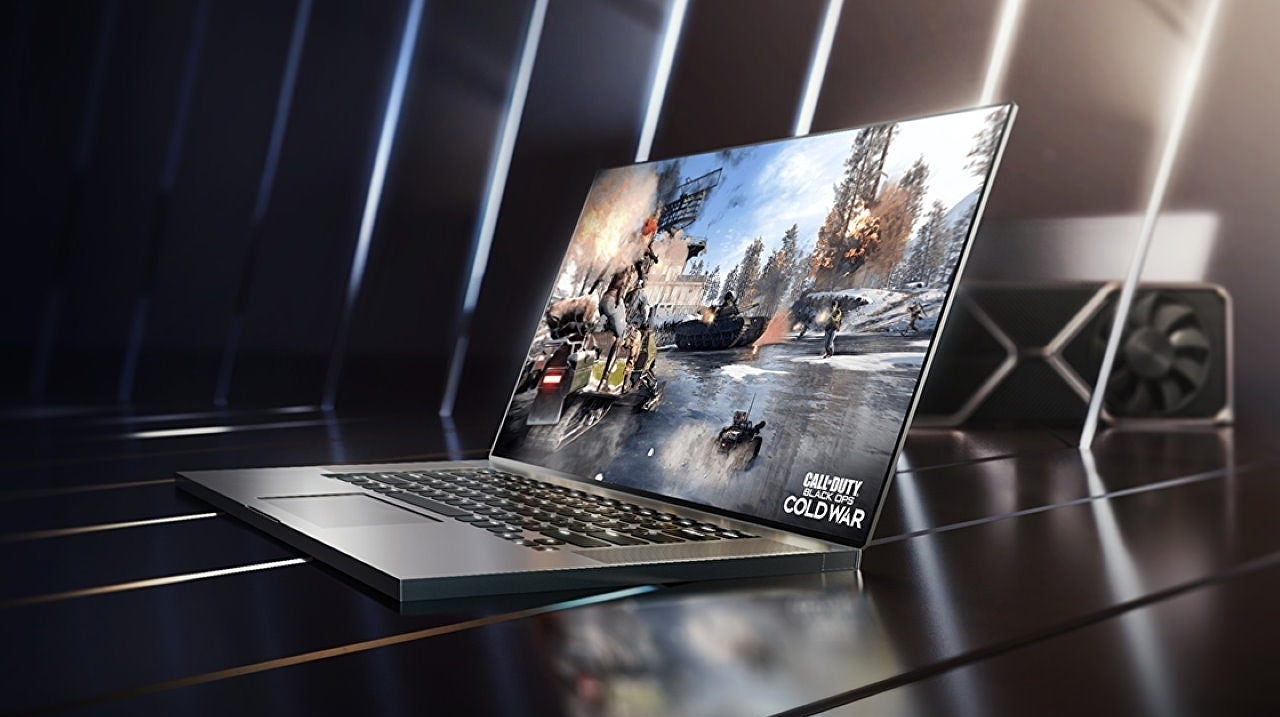Bad news: your gaming laptop is officially last-gen. That’s the word from Intel and Nvidia, who teamed up today to announce new mobile processors and graphics cards. Intel is debuting their Tiger Lake H CPUs, bringing their 10nm process to high-performance 45W processors ideal for gaming or content creation, while Nvidia announced two new mobile graphics cards, the RTX 3050 and 3050 Ti. Here’s what you need to know.
Let’s cover Nvidia’s announcements first, as the company is doing something a bit unusual here: they’re announcing two new laptop GPUs with no desktop equivalents (yet). The RTX 3050 and 3050 Ti also bring the RTX featureset, eg ray tracing and DLSS, down to a much more mainstream segment of the market. Previously, you’d be lucky to find an RTX-equipped gaming laptop for much less than $1000, but now RTX machines will start at around $800 – and sales towards the end of the year, eg Black Friday, will no doubt bring that figure down even further. That’s great news for game developers, as they can rely on gamers having access to RT even on mid-range machines when creating cross-platform games that are also targeting PS5 and Xbox Series X/S.
| GeForce Laptop | RTX 3080 | RTX 3070 | RTX 3060 | RTX 3050 Ti | RTX 3050 |
|---|---|---|---|---|---|
| GPU | GA104 | GA104 | GA106 | GA107(?) | GA107(?) |
| CUDA cores | 6144 | 5120 | 3840 | 2560 | 2048 |
| VRAM | 8/16GB GDDR6 | 6GB GDDR6 | 6GB GDDR6 | 4GB GDDR6 | 4GB GDDR6 |
| Memory Bus | 256-bit | 256-bit | 192-bit | 128-bit | 128-bit |
| Boost Clock | 1245-1710MHz | 1290-1620MHz | 1283-1703MHz | 1035-1695MHz | 1057-1740MHz |
| TDP | 80-150+W | 80-125W | 60-115W | 35-80W | 35-80W |
The 3050 and 3050 Ti are based on a new GPU from Nvidia, likely GA107, rather than being a cutdown version of the GA106 chip used in the RTX 3060. It uses the same 8nm Samsung process as its brothers and sisters, but ships with 2560 CUDA cores (in the fully-enabled RTX 3050 Ti, 2048 in the 3050), paired with 4GB of GDDR6 memory and a 128-bit memory bus – similar to the last-gen GTX 1650 and 1650 Ti.
